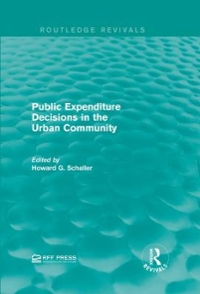I need answers and explanations as well.
28) Consider a two-year project that when fully funded at time 0 has a net present value of $350. The decision tree below shows the cash flows of the project when partially funded at the beginning of the Year 1 (at ( = 0) with an option to provide different amounts of funding at the beginning of Year 2 (at r = 1). This tree reflects two economic states (GE = good economy, BE = bad economy) in each of the two years. For a given year, each economic state has a 50% probability. Initial Fund Year 1 Additional Fund Year 2 GE 1600 -700 BE GE 1000 1300 GE 700 -500 BE Fund Partially 200 -1000 GE 800 -300 BE BE 500 GE Fund Fully 400 350 0 BE 0 Assume the discount rate is 0%. Calculate the value of the option at / = 0.35) You own a share of a nondividend-paying stock and will hold it for a period of time. You want to set aside an amount of capital as a percentage of the initial stock price to reduce the risk of loss at the end of the holding period. You are given: The stock price follows a lognormal distribution. ii) The annualized expected rate of return on the stock is 15%. iii) The annualized stock volatility is 40%. iv) The investment period is 4 years. v) The Value-at Risk (VaR) at the 3rd percentile for the capital plus the ending stock value equals the initial stock price. Calculate the capital amount as a percentage of initial stock price. (A) 57% (B) 63% (C) 71% (D) 82% (E) 91%38) An insurance company has a variable annuity linked to the S&P 500 index. A guaranteed minimum death benefit (GMDB) specifies the beneficiary will receive the greater of the account value and the original amount invested, if the policyholder dies within the first three years of the annuity contract. If the policyholder dies after three years, the beneficiary will receive the account value. Out of every 1000 policies sold, the company expects 10 deaths in each of years one, two, and three. Thus they also expect that 970 will survive the first three years. Assume the deaths occur at the end of the year. You are given the following at-the-money European call and put option prices, expressed as a percentage of the current value of the S&P 500 index. Duration Call Price Put Price years) 18.7% 15.8% 2 26.2% 20.6% 3 31.6% 23.4% Calculate the expected value of the guarantee when the annuity is sold, expressed as a percentage of the original amount invested. (A) 0.23% (B) 0.32% 0.52% (D) 0.60% (E) 0.76%40) Several lookback options are written on the same underlying index. They all expire in 3 years. Let S, denote the value at time ? of the index on which the option is written. The initial index price, So , is 150. The index price when the option expires, S, , is 200. The maximum index price over the 3-year period is 210. The minimum index price over the 3-year period is 120. Calculate the sum of the payoffs for the following three lookback options: Standard lookback call Extrema lookback call with a strike price of 100 . Extrema lookback put with a strike price of 100 (A) 180 (B) 190 (C) 200 (D) 210 (E) 22041) Which of the following statements about market anomalies is/are true? I. For IPOs, the high returns observed in the first few days after a new issue are often followed by relatively poor performance in the years ahead, suggesting that investors underreact to the initial news. II. Investors typically overreact to earning announcements, causing a subsequent price adjustment. III. The momentum effect is inconsistent with weak-form market efficiency. (A) I only (B) II only (C) III only (D) I, II, and III (E) None of (A), (B), (C), and (D) are correct











